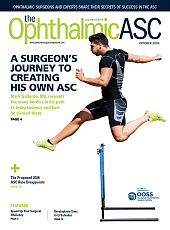This transcript has been edited for clarity.
Hi, I’m Krishna Mukkamala, MD, and at ASRS in 2025 I just presented information looking at an AI-based algorithm in home OCT pivotal trial for neovascular age-related macular degeneration (AMD).
We know that the home OCT (Scanly; Notal Vision) gives a useful visualization of disease activity, as compared to in-office OCT, based on previously presented and published data. We also know that home OCT scans, when evaluated by AI and expert graders, show good agreement. But the real question is: over a long period of time, longitudinally, how does an AI algorithm fare? So, we designed a study with 180 patients where home OCT scans were evaluated on a longitudinal basis, and the disease activity was compared by 3 expert graders as well as an AI algorithm.
When looking at the results, we will see that when there's a personalized approach or an approach that looks at threshold levels of subretinal or intraretinal hyporeflective spaces—which are likely indications of disease activity—that a personalized approach would result in a sensitivity of 99.1% and a specificity of 89.4%.
With this data we have 3 main take-home messages. One, that this is the first ever longitudinal study to validate the use of AI-based home OCT technology as compared to human experts. Second, that when we set personalized detection thresholds—ie, having a physician set thresholds that might be specific to that patient’s eye and disease—that there’s going to be a very high level of sensitivity, up to 99.1%, while maintaining a good level of specificity around 89%. And most importantly, when you're looking at AI-based detections of hyporeflective spaces, that there's a high level of agreement between expert graders as well as the AI device when looking at near-daily longitudinal series of home OCT scans.
Based on these 3 take-home messages, we look forward to the use of home OCT technology to improve patient care and outcomes in neovascular AMD. RP








